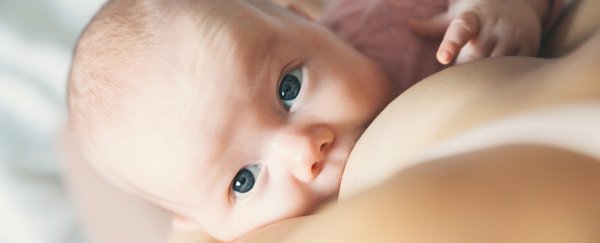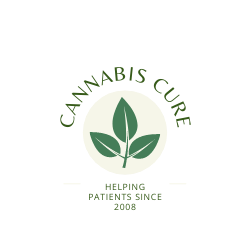Cannabinoids In Breast Milk – Endocannabinoids’ Role In Conception And Breastfeeding
Is there evidence to support the claim that there is such a thing as cannabis breast milk?
Scientists have discovered cannabinoids in breast milk – so the answer is yes there is evidence of cannabis/CBD in breast milk – absolutely!
The human body contains cannabinoid receptors specifically designed to process cannabinoids. Cannabis medications work so efficiently because of the endocannabinoid system (ECS), which is present in all humans and many animals.
This system consists of a series of receptors that are configured only to accept cannabinoids, especially tetrahydrocannabinol (THC) and cannabidiol (CBD). Recent research suggests that endogenous cannabinoids (endocannabinoids) and their cannabinoid receptors have a major influence during pre-and postnatal development.
High levels of the endocannabinoid anandamide and cannabinoid receptors are present in the preimplantation embryo and in the uterus. While a temporary reduction of anandamide levels is essential for embryonic implantation. In women accordingly, an inverse association has been reported between fatty acid amide hydrolase (the anandamide degrading enzyme) in human lymphocytes and miscarriage.
Endocannabinoids have been detected in maternal milk. Further observations suggest that children may be less prone to psychoactive side effects of Δ9-tetrahydrocannabinol or endocannabinoids than adults. The medical implications of these novel developments are far-reaching and suggest a promising future for cannabinoids in pediatric medicine (Source: The endocannabinoid-CB1 receptor system in pre-and postnatal life – Ester Fride).
Cell membranes in the body are naturally equipped with these cannabinoid receptors.
When activated by cannabinoids they help protect cells against viruses, harmful bacteria, cancers, and many other malignancies. It is a surprising fact that the first feed babies have contains cannabinoids in a mother’s cannabis breast milk
The first discovered cannabinoid receptor was termed CB1. Subsequently, a second receptor was found and naturally enough this was called CB2.
The CB1 receptor is concentrated in the central nervous system but is found in other tissues as well, including the liver, gut, uterus, prostate, adrenals, and cardiovascular system. CB2 tends to be localized in the immune cells.
Of the cannabinoids derived from the cannabis plant, THC, which is the most potent psychoactive, binds to both CB1 and CB2 receptors.
Cannabidiol (CBD) binds to none of these receptors and has no psychoactive effect. It is still not fully understood how CBD is utilized and it is thought to react with an as yet undiscovered CB receptor, or perhaps even by a completely different mechanism entirely.
“Interestingly, endocannabinoids are present in breast milk, 2-AG levels being much higher than those of anandamide.” (Source: Cannabis and endocannabinoid modulators: Therapeutic promises and challenges – Igor Grant, Rael Cahn).
CBD And Breastfeeding – Mother Denied Breastfeeding By Hospital Over Medical Cannabis
A cautionary tale for all expectant mothers who use medical marijuana, particularly in North America.
A new mother in Portland, Oregon says doctors told her she can’t breastfeed because she uses medical marijuana.
Crystal Cain used medical marijuana during her pregnancy on the advice of her midwife, she says for anxiety and nausea.
She delivered her baby eight weeks premature last week, and the baby needed an incubator to survive. Cain says doctors didn’t allow her to breastfeed while she was still in the hospital, and made her sign a waiver when she left.
The waiver acknowledges the possible risks to breastfeeding while consuming THC, the compound in marijuana that gets you high.
This case was featured in 2014, however, this is still being implemented. We received this email on February 14th, ironically Valentine’s day, from a very concerned parent. We were able to advise on where to obtain legal advice regarding the matter from a lawyer who specializes in marijuana law.
However, there is little that can be done whilst medical practitioners continue to rely on incorrect, unproven, and inaccurate studies regarding marijuana use and breastfeeding:
MESSAGE RECEIVED: Please help us, we don’t know our rights. We planned to deliver our baby at a hospital with a midwife, as we have done in the past with our other kids. Mom uses cannabis and breastfeeds, our midwife was aware and okay with it. Since the baby came early we were sent to a different hospital, and because mom uses cannabis they refuse to let us breastfeed her. They have stated old outdated studies claiming it is harmful and we know otherwise. Is there any way you could help, thank you.
We certainly advise any expectant mothers to be selective in who they choose to inform of their medical marijuana use.
Cannabiniods Fundamental Role In A Healthy Conception And Successful Pregnancy
Researchers have discovered that cannabinoids play a vital role in pregnancy.
A 2006 report from the Pediatrics Department at Vanderbilt University characterized endocannabinoids as “an emerging concept in female reproduction.”
Their research discovered: a cannabinoid sensor mechanism to influence crucial steps during early pregnancy.
After intercourse, the newly fertilized embryo must attach itself to the lining of the uterus. Without becoming attached to the uterine wall, which forms the umbilical cord, there will be no pregnancy.
For the embryo to become attached to the lining of the uterus, a particular amount of one specific endocannabinoid, called anandamide, is vital. This cannabinoid uses the CB1 receptors that are on the blastocyst (fertilized egg) – the same type of receptors that the herbal cannabinoid THC uses.
Cannabinoids not only play a role in the first responses of the body to fertility, but they also play a role in other aspects of pregnancy as well. The Vanderbilt research shows that if there is not enough anandamide the embryo will not become attached to the uterine lining.
It takes a specific amount of cannabinoids to activate a certain number of CB1 receptors in order for the fertilized egg to safely attach itself to the uterus.
Cannabis Breast Milk And The Human Uterus During Pregnancy
Until the fertilized egg attaches itself to the lining of the uterus, there is no viable pregnancy; just a fertilized egg.
The life of the egg and the beginning of a viable pregnancy depends on a healthy endocannabinoid system (ECS). This process is accomplished because there are CB1 receptors on the blastocyst – that is, on the fertilized egg itself – and the cannabinoid anandamide on the endometrium – the inner lining of the uterus. A 2004 study published in the American Journal of Obstetrics and Gynecology concluded:
“Both endogenous and exogenous cannabinoids exert a potent and direct relaxant effect on human pregnant myometrium, which is mediated through the CB1 receptor.”
This basically means that the middle layer of the uterine wall, the “myometrium,” is modulated by cannabinoids. These uterine CB1 receptors are activated by endocannabinoids (also by herbal cannabinoids).
In addition to conception, a 2004 report showed that endocannabinoids activate the oral motor musculature necessary for stimulating feeding (see below). The same 2004 study also stated: “Anandamide has neuroprotectant properties in the developing postnatal brain.”
Hardwiring The Brain: Endocannabinoids Shape Neuronal Connectivity
There is overwhelming evidence that endocannabinoids help in brain development.

In 1995, there was lab research on mice that showed that the mammalian endocannabinoid system (ECS) is involved in signaling within the uterus. Throughout pregnancy and during nursing the endocannabinoid system (ECS) delivers relief and neuroprotection to the mother, fetus, and baby.
The endocannabinoid system, including its receptors (CB(1) and CB(2)), endogenous ligands (‘endocannabinoids’), synthesising and degrading enzymes, as well as transporter molecules, has been detected from the earliest stages of embryonic development and throughout pre-and postnatal development. In addition, the endocannabinoids, notably 2-arachidonoyl glycerol, and as discussed earlier are also present in maternal milk.
During three distinct developmental stages (i.e. embryonic implantation, prenatal brain development, and postnatal suckling), the endocannabinoid system appears to play an essential role in development and survival.
During fetal life, the cannabinoid CB(1) receptor plays a major role in brain development, regulating neural progenitor differentiation into neurons and glia and guiding axonal migration and synaptogenesis.
The endocannabinoid system plays several key roles in pre-and postnatal development. Future studies should further clarify the mechanisms involved and provide a better understanding of the adverse effects of prenatal exposure, in order to design strategies for the treatment of conditions such as infertility, mental retardation, and failure-to-thrive. (Source: Multiple roles for the endocannabinoid system during the earliest stages of life: pre-and postnatal development.)
Human Cannabiniod Receptors And Cannabis Breast Milk
If the body naturally has cannabinoid receptors surely it must then produce its own cannabinoids?

If this were not the case then there would have been no sound biological reason to develop them. Research indicates that the human body has in fact evolved to both produce and utilize its own cannabinoids.
It comes as no surprise that these endogenous compounds are transferred to the infant via cannabinoids in breast milk. If the body naturally has cannabinoid receptors it stands to reason that it must then produce its own cannabinoids.
According to the findings of several major scientific studies, human mothers naturally produce cannabinoids in breast milk and furthermore, these cannabinoids are vital for proper infant development. They are classified as a specific type of neuromodulatory lipid.
Research suggests that one of the main functions of these cannabinoids in cannabis breast milk is to help a newborn child to feed by stimulating the suckling process.
Scientific testing has shown that the CB1 receptor, in particular, is essential in the development of the feeding response in baby mice.
When the CB1 receptor is removed or blocked in laboratory conditions baby mice do not suckle milk from the mother and die.
Is a pretty harsh experiment for the baby mice, but this demonstrates the importance of the cannabinoids and their receptors in infant development and indicates that cannabinoids in breast milk play a critical role in infant survival by controlling milk ingestion.
This has led to further research in the clinical application of cannabinoids in treating human infant mortality, particularly in the care of babies who are born prematurely.
The medical implications of these developments are far-reaching and suggest a promising future for cannabinoids in pediatric medicine for conditions including ‘non-organic failure-to-thrive and cystic fibrosis.
Human breast milk has been traditionally considered sterile; however, recent studies have shown that along with the cannabinoids in breast milk, it also contains and supplies a completely natural cocktail of probiotic bacteria (commensal and mutualistic) to the infant’s gut.
Along with stimulating your baby’s feeding response these compounds also protect the infant against infections and contribute to the maturation of the immune system, among many other yet to be scientifically proven functions.
Without cannabinoids in cannabis breast milk, infants would not be stimulated with a desire to feed. Observations of how babies act after being fed show that they exhibit symptoms of cannabinoid use.
As well as the essential function of stimulating an infant’s appetite, cannabinoids in cannabis breast milk also help to calm and relax the baby. Cannabinoids are not present in baby formula, which makes it seriously inferior to breast milk.
There are opposing views on cannabinoids in cannabis breast milk and in particular cannabis use during pregnancy. Thomas W. Hale PhD; who specializes in drug exposure during pregnancy and breastfeeding, states:
“Studies in breastfeeding mothers have demonstrated that there is a significant and documented risk to the infant based on human experience, or it is a medication that has a high risk of causing significant damage to an infant.
The risk of using the drug in breastfeeding women clearly outweighs any possible benefit from breastfeeding. The drug is contraindicated in women who are breastfeeding an infant.”
However he doesn’t cite any credible or conclusive trials and contradicts Grant & Cahn – (Clin Neurosci Res. 2005; 5(2-4): 185–199. doi: 10.1016/j.cnr.2005.08.015), the Pediatrics Department at Vanderbilt University, and Dr. Melanie Dreher (Rush Medical Centre Chicago).
Even the studies with actual data were out of date, out of context, or unsupportive of Hale’s conclusions. He also simply ignores several other peer-reviewed studies including the Canadian OPPS extensive research program (see below).
Of the studies, Hale references one was conducted with 27 women. Another with even less, citing only 16 women, which is unscientific and quite frankly ridiculous.
Furthermore, neither of these studies found indicators of harm. Indeed, the first study Hale refers to, with the 27 women who used cannabis every day while breastfeeding found, “No differences in either growth, mental or motor development.”
Women are constantly shamed and stigmatized for using cannabis during pregnancy or breastfeeding, no matter how responsibly or infrequently they use it. There is still a common perception that it is extremely dangerous and irresponsible to ingest THC while breastfeeding, thanks to idiots like Hale.
Joelle Puccio is a perinatal nurse at a Seattle childbirth center. The hospital had no policy on substance exposure during breastfeeding, so she wrote one. At the committee’s final review, despite her extensive research, she was ignored. She argued, but it was agreed that the best thing to do was follow the established expert. Puccio stated:
“All the managers agreed that we had to go by Hale and not by my literature review, which is the exact right thing for them to do most of the time. It’s just that in this instance, Hale is wrong.”
Her policy was going to include a recommendation that cannabis use was not a contraindication for breastfeeding. Her own research on the subject yielded little evidence of risk – arguing that it has massive benefits for infants and mothers alike.
Cannabiniods In Cown Milk And Other Animal Foods
All animals have an endocannabinoid system (ECS). All vertebrates and invertebrates are known to have an ECS.
The most primitive animal found to express cannabinoid receptors is the sea-squirts, an animal that evolved over 600 million years ago. When sufficiently large levels of cannabinoid receptor agonists (a substance that initiates a physiological response) are administered to livestock, one significant pharmacological effect that is induced is the accumulation of a non-trivial quantity of cannabinoids in the livestock’s bodies, such as in the adipose tissue, milk, or egg yolks.
In these instances, some food products derived from such livestock may contain pharmacologically significant quantities of cannabinoids.
The exposure to cannabinoids via consumption of milk and dairy products, resulting from the use of hemp seed-derived feed materials in particular is unlikely to pose a health concern. In fact, the evidence supports a beneficial effect from eating these animal products.
In the European Union (EU), the cultivation of C. Sativa varieties is granted provided the THC content does not exceed 0.2 %. The hemp plant is a multi-purpose crop grown both for its fibres – principally for industrial purposes – and seed for the production of feeding stuff.
For example, hemp seed cake (the residue of the seed after oil extraction) is used to feed cows, pigs, and horses. A less common practice is the use of leaves, flowers, and stalks (the by-product of hemp production for fibres and seeds) as feed for ruminants and pigs.
As high temperatures are not generated during dehulling and oil extraction, these processes are not expected to result in increased levels of Δ9-THC in the oil or meal resulting from the decarboxylation of precursor acids.
In adults, acute exposure to Δ9-THC through the consumption of milk and dairy products ranged between 0.001 µg/kg body weight (b.w.) per day and 0.03 µg/kg b.w. per day, the latter obtained under the scenario 20 litres (L) milk yield and 11 mg/kg of Δ9-THC in hemp seed-derived feed materials.
In infants, acute exposure estimations to Δ9-THC through the consumption of milk and dairy products ranged between 0.006 µg/kg b.w. per day and 0.13 µg/kg b.w. per day, the latter obtained under the scenario 20 L milk yield and 11 mg/kg of Δ9-THC in hemp seed-derived feed materials.
The estimates of dietary exposure to Δ9-THC, by the consumption of milk and dairy products, do not pose a health concern.
Cannabis/CBD Use During Pregnancy And Breast Feeding
The findings of Dr. Dreher caused many in the medical profession to change their perception of cannabis use.
Dr. Melanie Dreher studied women using cannabis during their entire pregnancy and then evaluated the babies one year after birth. She focused on a group of Jamaican women who smoked cannabis during pregnancy and those who didn’t. She states:
“It seems to make no difference in terms of exposure during pregnancy. We looked at these children again at age five, both groups of children, and could find absolutely nothing that linked their development with their exposure during pregnancy.”
She expected to see a difference in the babies as far as birth weight and neurological tests, but there was no difference whatsoever.
The differences that the researchers did notice, that are as yet unexplained are that the babies of the women who had smoked cannabis daily during their pregnancy, socialized more quickly, made eye contact more quickly, and were easier to engage.
The Ottawa Prenatal Prospective Study (OPPS)
The OPPS has produced several reports that have examined the link between prenatal exposure to cannabis and subsequent child development.
Neither in a 5-6-year-old group follow-up nor in the 9-12-year-old group follow-up checks did they note any relationship between prenatal marijuana exposure and various school achievement measures.
In a study of a large cohort of Australian women presenting for public prenatal care at a large hospital between 2000 and 2006, Hayatbakhsh and colleagues (2011) reported that the use of cannabis during pregnancy significantly predicted negative birth outcomes.
These included low birth weight, preterm birth, small size for gestational age and admission to the neonatal intensive care unit.
In contrast, the OPPS did not observe any differences in growth measures at birth between newborns born to cannabis-using mothers and non-users (Fried & O’Connell, 1987).
Moreover, the results found only weak evidence suggesting that any maternal use of cannabis during pregnancy was associated with either a reduction in birth weight or low birth weight (English, Hulse, Milne, Holman & Bower, 1997).
Further Reading
Introduction to Medical Cannabis
How and where to safely buy RSO medical cannabis oil online
Help and Advice
If you need advice or help with Medical Cannabis, please use the contact form provided. We try to answer all emails within 24 hours and are happy to help and advise on all aspects of Medical Cannabis treatments in complete confidence.
Disclaimer: Please note that whilst we consider ourselves subject matter experts regarding Medical Cannabis, we are not medical professionals. We are a Medical Cannabis information resource, educating and helping those in need. Whilst we are very strong believers in the benefits of Medical Cannabis, there is still limited evidence that Medical Cannabis can treat/cure all the illnesses we discuss on our website. We recommend you do as much research as possible, and where practical seek professional medical advice before proceeding with Medical Cannabis oil.





